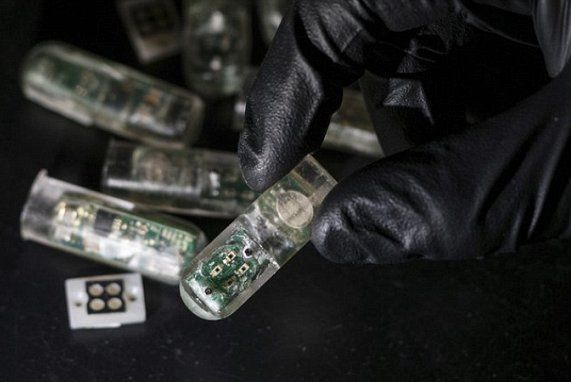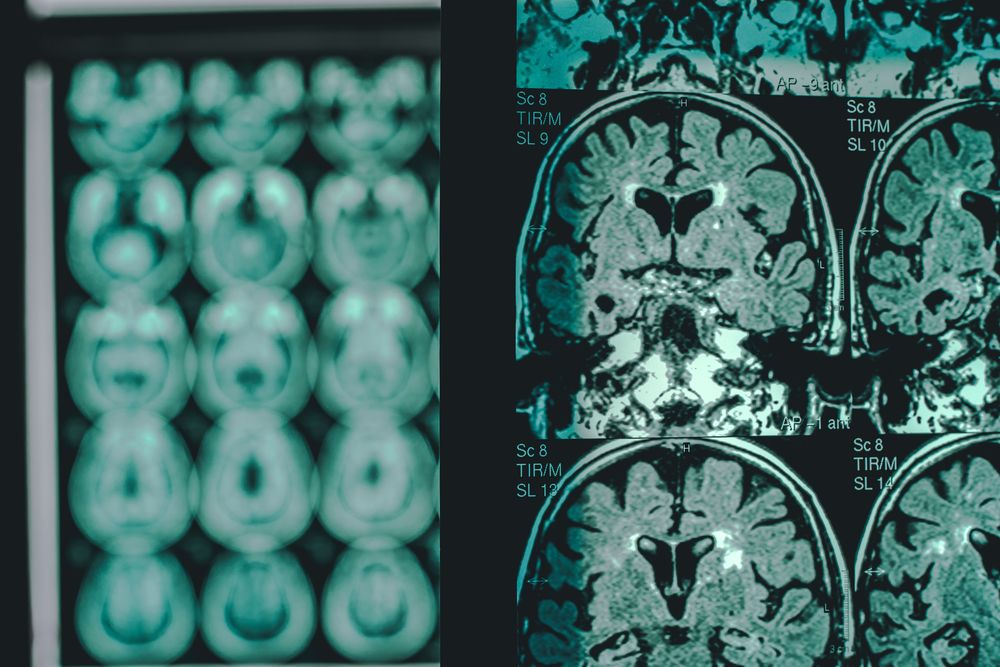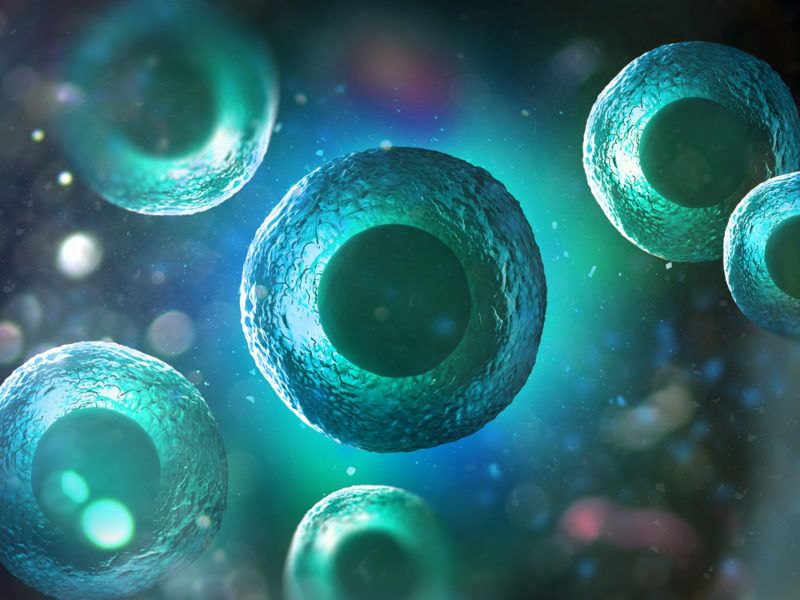Genes active after death may be important for transplant success and calculating time of death.
Category: biotech/medical – Page 2,826

Nanoparticles carry drug duo into the brain to fight cancer
Glioblastoma is one of the most deadly forms of cancer. Affecting the brain, those unlucky enough to receive a diagnosis don’t have many treatment options – and usually a median life expectancy of just over a year. Now, researchers at MIT have developed nanoparticles that could provide hope, crossing the blood-brain barrier and delivering two types of drugs to fight tumors.
The MIT nanoparticles are liposomes, fatty droplets that can carry one drug on the inside and another in the outer layer. On the inside, the particles were loaded with a common chemotherapy drug called temozolomide, while the outer shell contained a more experimental substance known as JQ-1.

Measles makes alarming return to Europe and the Americas
Why it matters: Measles is a killer disease. It’s estimated that more than 2 million children a year died from measles in the 1980s, but due to global vaccine programs (including Gavi, the Vaccine Alliance launched in 2000), that number has been brought under 70,000 cases. The return of measles to Europe and the Americas could suggest that some of our vaccine successes could be reversing or unraveling. In the case of Venezuela, measles outbreaks are mostly due to the effect of broad economic problems on its health care system, but for Europe and the U.S. measles outbreaks show the effects of powerful and well-organized anti-vaccine movements.
What’s next: Vaccines do not cause autism, but more advocacy is needed to counteract the false claims of anti-vaccine groups. In April 2018, the European Commission proposed activities to strengthen the EU’s capacity to vaccinate its population and address what some call “vaccine hesitancy.” In the U.S., however, there are still 18 states that allow non-medical vaccine exemptions linked to personal or philosophical beliefs.
Peter Hotez is a professor and dean of the National School of Tropical Medicine at Baylor College of Medicine, where he is also director of the Texas Children’s Hospital Center for Vaccine Development, and the author of “Vaccines Did Not Cause Rachel’s Autism.”

Swallowable ‘bacteria on a chip’ could help diagnose colon cancer, bowel disorders and gut ulcers
Unlike other ingestible chips, this new version by MIT contains millions of genetically engineered living cells to act as sensors, designed to light up when they detect bleeding.
It’s the latest advance in a growing field of sensors that can be swallowed or worn to monitor our health.
Pills equipped with cameras, thermometers and acidity gauges already look for disease and track digestion.

NASA is bringing cryosleep chambers out of fiction and into science
You probably thought it was infinitely cool when Ripley and the crew of the Nostromo first emerged from their cryosleep chambers in Alien, but now that slice of sci-fi could become a reality in our lifetime.
NASA and SpaceWorks Enterprises are currently developing a stasis chamber (as opposed to individual pods like those in the movie) that could induce an extended state of torpor, or metabolic inactivity medically brought on by lowering body temperature to the point of mild hypothermia, that could allow astronauts to snooze for at least two weeks on end during longer missions. Also unlike Alien, in which everyone is temporarily in freeze-frame until the ship arrives at its destination, the crew would rotate cryosleep shifts so there is always someone conscious in case something goes awry where no one can here you scream.
SpaceWorks’ objective is to “place crew and passengers in a prolonged hypothermic state during space-mission transit phases (outbound and Earth-return) to significantly reduce the system mass, power, habitable volume, and medical challenges associated with long-duration space exploration,” as explained on their website.

Vascular risk appears to accelerate cognitive decline in old age
Vascular risk and accumulation of beta-amyloids seem to accelerate the rate of cognitive decline in elderly adults.
Vascular risk appears to be a strong predictor of dementia, especially in older individuals with high levels of brain beta-amyloids, and the interaction between these two risk factors might lead to a higher rate of cognitive decline, according to a recent study at the Massachusetts General Hospital.
Alzheimer’s disease (AD) is an age-related neurological disorder whose most feared outcome is dementia, along with other symptoms, such as behavioral issues, loss of motivation, and even the inability to take care of oneself. Patients suffering from AD exhibit an accumulation of plaques in their brains; these plaques, resulting from the build-up of amyloid-beta protein, have long been thought to be the cause of the disease, though other hypotheses have been put forward as well.
However, the presence of excess beta amyloids is a constant in all AD patients, and a recent study by researchers at the Massachusetts General Hospital has discovered that increased cardiovascular risk, combined with higher brain amyloid levels, is a predictor of faster cognitive decline in clinically normal elderly. [1].

NAD+ Regulates the Creation of Fat Cells
After NAD+ is consumed, it is broken down into nicotinamides and ADP-ribose; the researchers concluded that this means that NAD+ must be resynthesized following this in order for normal cellular functions to continue. This converges with previous studies, which suggest that NAD+ decline leads to changes in metabolism and an increased risk factor for some diseases; this typically happens as the result of aging, as NAD+ levels begin to fall.
With this in mind, the research team thought that cellular metabolism and gene regulation were potentially connected to NAD+ synthesis. They discovered evidence suggesting that compartmentalized NAD+ synthesis and the subsequent consumption are integrated with glucose metabolism and adipogenic transcription as part of the adipocyte differentiation process.
NAD+ synthesis acts as a mediator of PARP-1-regulated transcription during the differentiation of adipocytes, linking cellular metabolism and the adipogenic transcription process. During adipogenesis, nuclear NAD+ levels fall, causing the induction of NMNAT-2, the cytoplasmic NAD+ synthase. This increased level of NMNAT-2 then reduces the availability of NMN and leads to a reduction of nuclear NAD+ synthesis via NMNAT-1. The drop in NAD+ levels then results in decreased PARP-1 activity, which then reduces levels of inhibitory ADP-ribosylation of the adipogenic transcription factor C/EBPβ. Reduced ADP-ribosylation of C/EBPβ means that it is able to bind its target genes, thus promoting the differentiation of preadipocytes into adipocytes. In other words, a decline of NAD+ encourages an increase of preadipocytes turning into adipocyte fat cells.

Ignore the hype over big tech. Its products are mostly useless
Despite this, a regular ritual of hype and hysteria is now built into the news cycle. Every now and again, at some huge auditorium, a senior staff member at one of the big firms based in northern California – ordinarily a man – will take the stage dressed in box-fresh casualwear, and inform the gathered multitudes of some hitherto unimagined leap forward, supposedly destined to transform millions of lives. (There will be whoops and gasps in response, and a splurge of media coverage – before, in the wider world, a palpable feeling of anticlimax sets in.)
It’s years since Silicon Valley gave us a game-changer. Instead, from curing disease to colonies on Mars, we’re fed overblown promises, says Guardian columnist John Harris.
Bendy Laser Beams Can Examine Human Tissue Like Never Before
Light-sheet fluorescence microscopy could lead to less intrusive and more effective diagnosis for patients.
- By Jonathan Nylk, The Conversation US on May 23, 2018
Bioprinting is the next medical revolution — C2 Montreal
Erik Gatenholm is Co-Founder and CEO here at CELLINK. In 2017, he founded CELLINK to revolutionize the way that we conduct medical research worldwide. He led a workshop at the C2 Montreal conference called “Need a tissue, Bioprinting is the next Medical Revolution”
At C2 Montreal – There was a presentation on bioprinting and Cellink technology. Then there was an activity where people in groups looked at a sample of bioprinted tissue and people worked on exercises of what people thought was possible or preposterous in the future.
There was a forecast of increased tissue engineering enhanced plastic surgery.